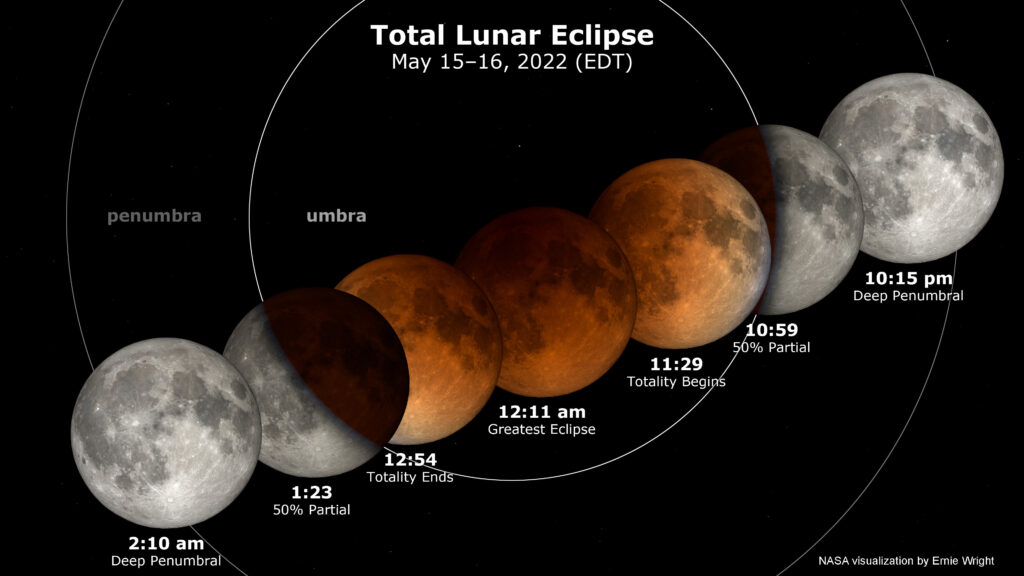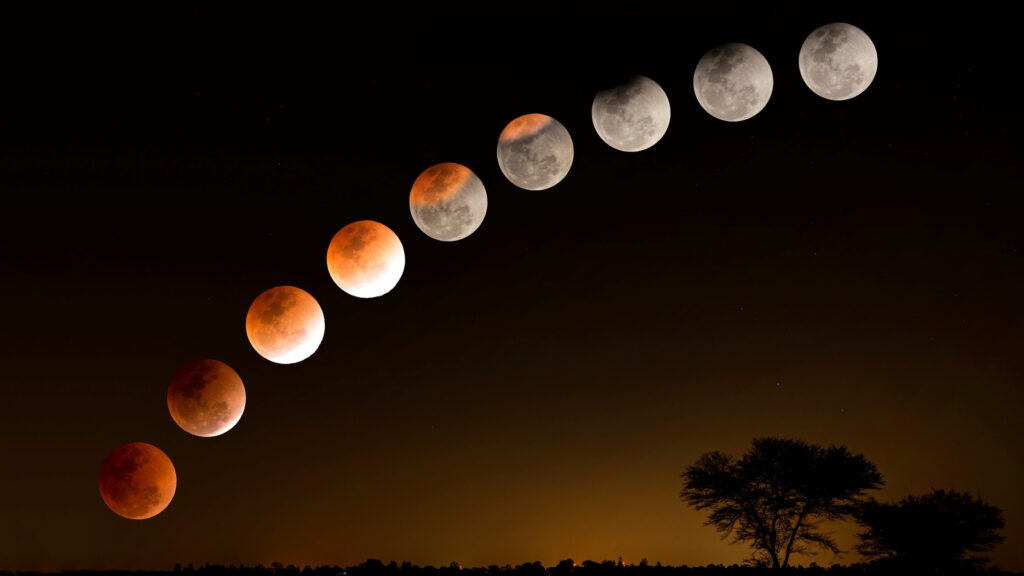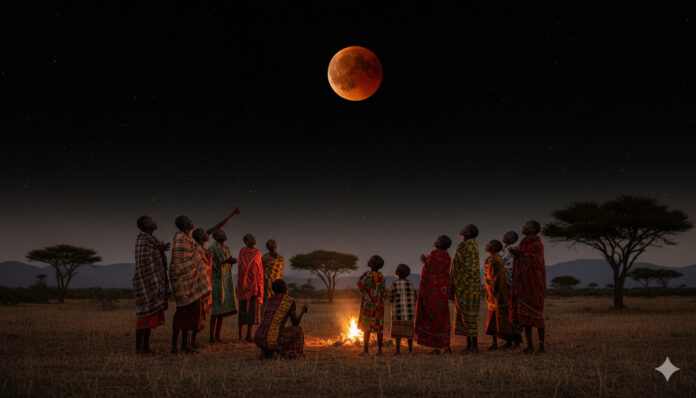On the night of September 7–8, 2025, the skies over Kenya and much of Africa transformed into a breathtaking spectacle. The Moon, usually pale and silver, blushed a deep crimson as the Earth’s shadow swallowed it whole. Known as a blood moon, this total lunar eclipse mesmerized millions of skywatchers around the world. Yet for many African cultures, the moment is far more than a scientific event—it is a canvas of meaning, a celestial drama layered with mystery, warnings, and hope.
For astronomers, the reddish glow comes from sunlight bending through Earth’s atmosphere and scattering its blue wavelengths, leaving only the red to bathe the Moon. But for centuries before telescopes, Africans told stories of why the Moon turned red, each narrative deeply tied to local beliefs about life, death, and the natural order.

In the ancient Kingdom of Buganda, eclipses were feared as signs of imbalance. A blood moon meant cosmic forces were disturbed, and rituals were performed to “heal” the Moon. Among the Maasai of Kenya and Tanzania, the eclipse symbolized a lion attacking the Moon, its blood dripping across the night sky. Communities would sing, dance, and make noise to chase the predator away, a tradition echoing similar practices in Asia and the Americas.
What makes African interpretations especially fascinating is how often they reflect social values. The Luhya people of Western Kenya viewed the lunar eclipse as a warning against conflict and disunity. The Moon’s darkening symbolized a community in danger of tearing itself apart unless harmony was restored. In contrast, the Zulu of South Africa considered the blood moon a cleansing moment. They believed it symbolized the Moon renewing itself, just as people were called to renew their moral and spiritual lives.

One little-known detail is how eclipses influenced royal power. In some West African kingdoms, rulers saw the blood moon as a test of their spiritual authority. A successful ritual to “protect” the Moon reinforced their legitimacy, while failure could stir whispers of weakness. These beliefs reveal how astronomy and politics often walked hand in hand across the continent.
Even today, in parts of rural Africa, some elders still caution pregnant women to stay indoors during a blood moon, fearing it could bring misfortune. Others interpret it more positively, as a sign of transition and fertility, linking the blood-red glow to the cycles of life itself. Modern science may explain the eclipse in terms of light and shadow, yet the stories persist, weaving cultural identity into the fabric of the night sky.
The blood moon of 2025 has already sparked a wave of photographs and conversations on social media. But beyond the stunning images lies a reminder that humanity has always looked upward for meaning. In Africa, those meanings remain as vivid as the eclipse itself—blending astronomy, mythology, and the rhythms of daily life.


My partner and I absolutely love your blog and find most of your post’s to be just what I’m looking for. Would you offer guest writers to write content for yourself? I wouldn’t mind producing a post or elaborating on many of the subjects you write regarding here. Again, awesome site!